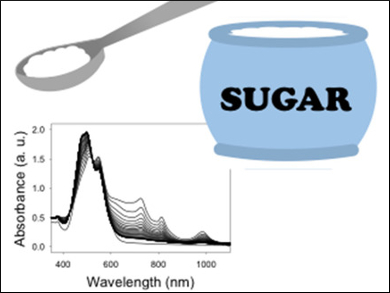Perylene bisimide (PBI) materials could be useful for a variety of applications in organic electronics, including organic light emitting diodes (OLEDs), solar cells, and sensors. Emily R. Draper and colleagues, University of Glasgow, Scotland, have used self-assembled amino-acid-functionalized PBIs as photoconductive materials. The PBIs are assembled in water and drop-cast or aligned and dried under shear to form ordered photoconductive thin films.
The researchers are working on increasing the lifetime and stability of the UV-light-generated radical anion species that is responsible for the conductivity in the thin films. They found that the addition of dextran or sucrose into the thin films significantly increases the lifetime of the radical anion, from 30 min to over 8 h in air. In addition, the wavelength preference of the photoresponse is shifted towards visible light.
According to the team, these changes are a result of the stabilization of the radical anion species due to the sucrose or dextran interacting with the PBI structures, resulting in less recombination of the charges within the film. This enhanced stability in air and the shift in wavelength preference opens up the possibility of these materials being used in more thin-film devices.
- Using Sugar-based Additives to Prolong the Lifetime of Air-Stable Radicals in Self-Assembled Perylene Bisimides,
Ilze Lāce, Stephen Sproules, Emily R. Draper,
ChemNanoMat 2018.
https://doi.org/10.1002/cnma.201800153



![Synthesis of [c2]Daisy Chains via Mechanochemistry](https://www.chemistryviews.org/wp-content/uploads/2025/04/202504_RotaxanesWithSolidStateMechanochemistry-125x94.png)